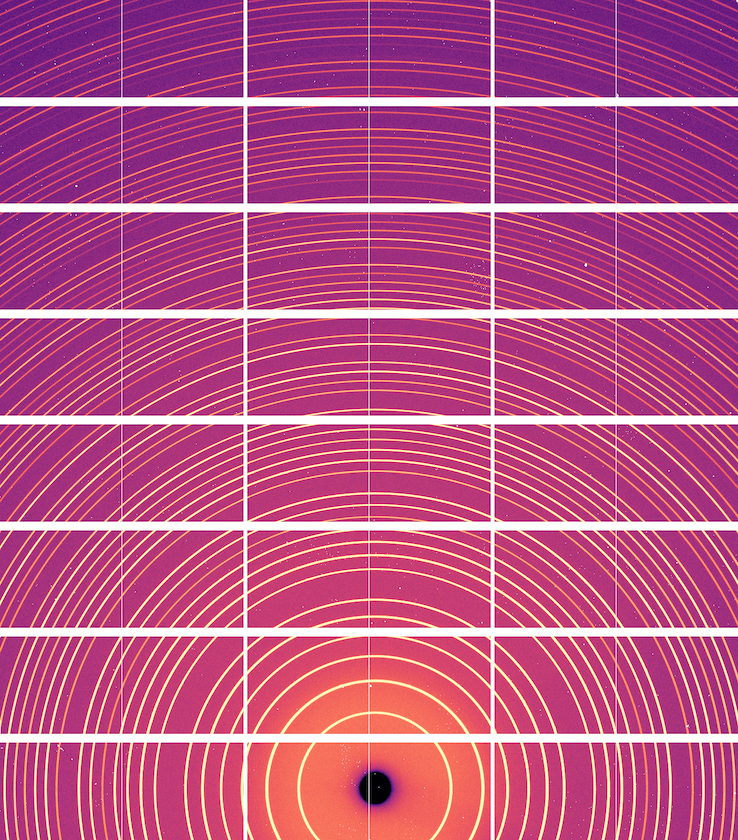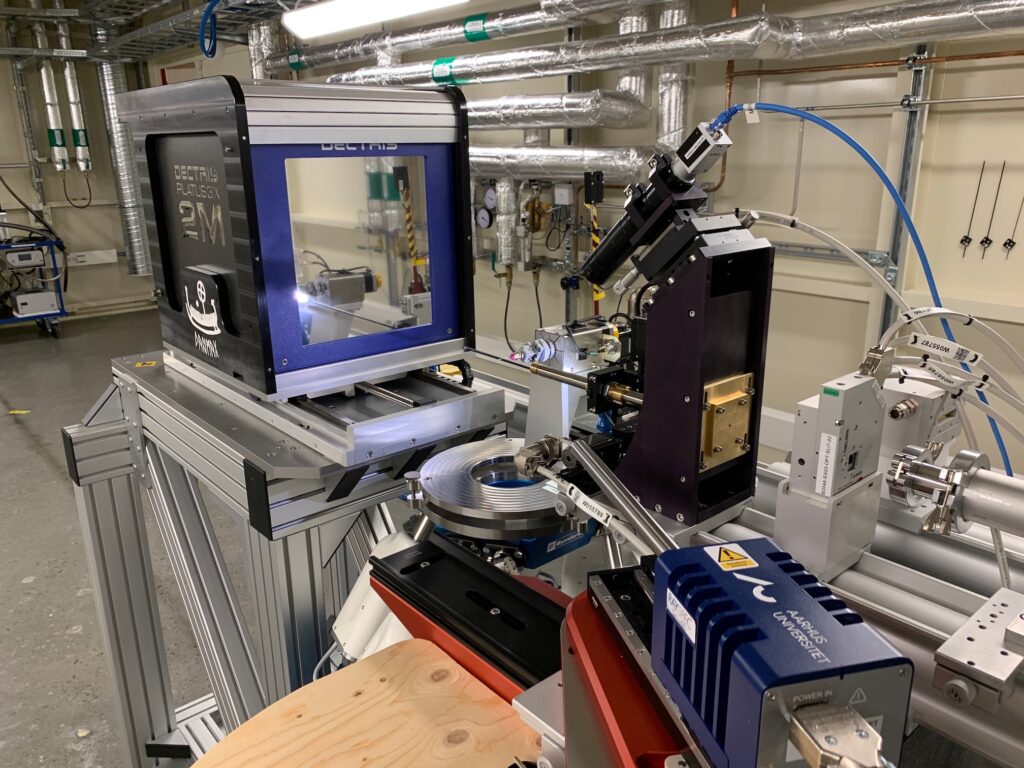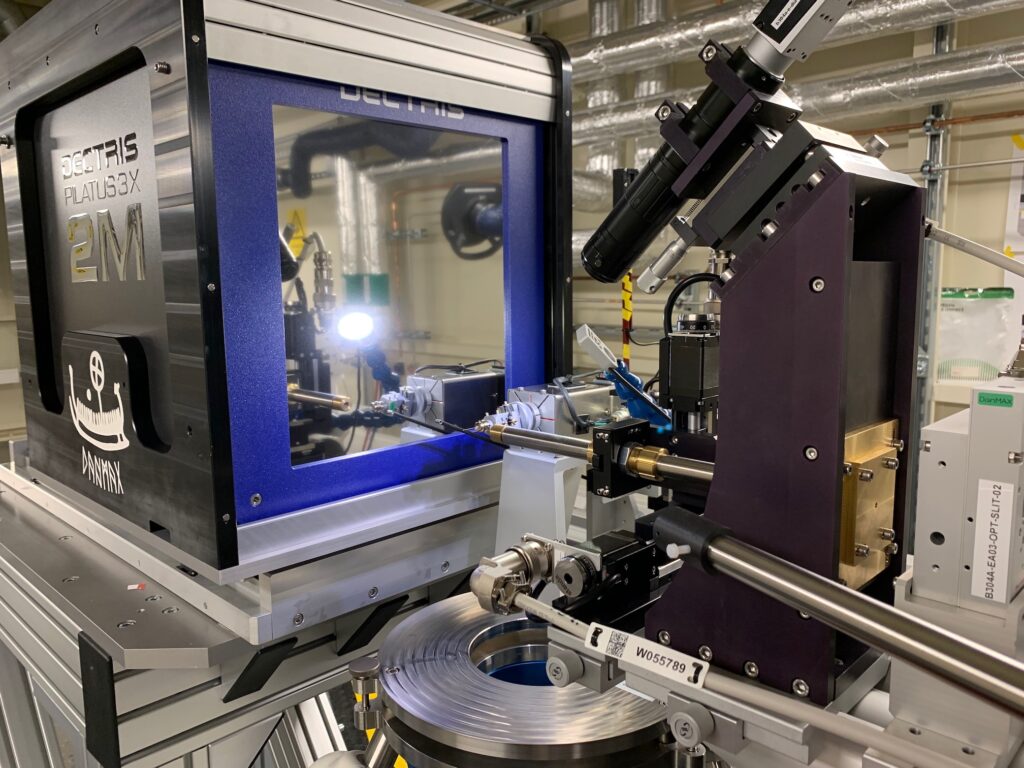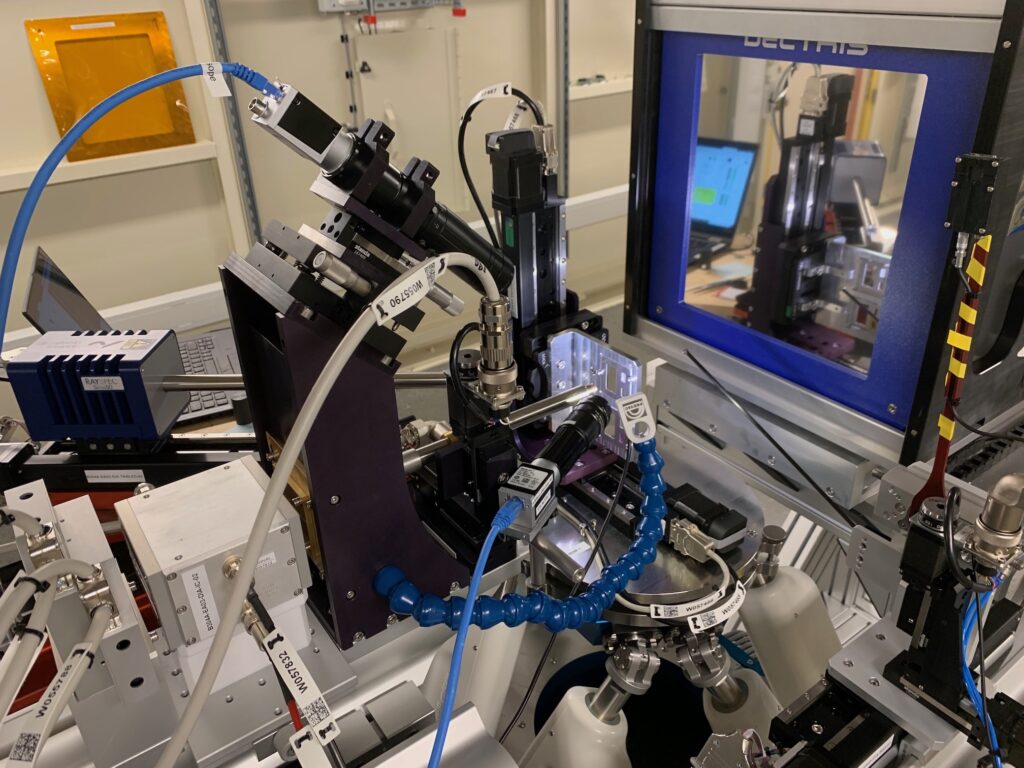The PXRD2D instrument has been designed to be very flexible in order to accommodate a wealth of sample environments. The Instrument is built on a stable granite stage that holds all equipment except the area detector. The main sample stage is a Symetrie Breva ST hexapod with a capacity of 200 kg and a mechanical repeatability of ±0.5 µm (Specifications of the hexapod can be found here: https://symetrie.fr/en/hexapods/breva/).
Various positioners and sample environments can be placed on top of the hexapod using a custom made kinematic mount. For further details see the Sample Environment page.

The area detector, DECTRIS PILATUS3 X 2M CdTe, is placed downstream of the granite block and hexapod. The detector can be operated at 250 frames per second. It is placed on a large gantry capable of translating the detector in X, Y and Z (along the beam) and tilting the detector up to 45 degrees in the vertical scattering plane. The direct beam position can be centered on the detector or anywhere on the lower left quarter of the detector surface (or outside the active area).
To help you design your experiment, we have developed xrdPlanner. Here, you can compare the experimental parameters (sample-to-detector distance, photon energy, beam stop distance) to find the best setup for your experiment. Read more in our paper (https://doi.org/10.1107/S1600577523011086) and read the full description and documentation on GitHub. The program can be installed using PyPi: pip install xrdPlanner
An energy-resolved silicon drift detector, RAYSPEC SiriusSDD, fluorescence detector is mounted on the outboard side of the instrument in a backscattering geometry. The signal is subsequently processed in a Xspress3 mini pulse processor. The angle and position of the detector are adjusted manually, but the exact sample-to-detector distance can be adjusted using the translation stage. The acquisition frequency of the XRF signal match that of the PILATUS area detector.



Various equipment is mounted on the instrument, listed here from upstream towards downstream:
- Guard slits: Slits for removing stray scattering. Should not be used to define the beam size
- I0 diode
- Brass mask: Fixed Ø4 mm hole for removing stray scattering (mounted on microscope holder)
- Microscope camera: microscope mounted above the beam at a 45 degree angle
- Collimator/pinhole: Collimator with exchangeable pinholes. Motorized XY translation, manual RxRy rotations
- SAMPLE
- PN diode: A compact PN diode can be inserted (pneumatic) between sample and beam stop to facilitate alignment of e.g. slits and samples.
- Beam stop: Tungsten beam stops in various diameters mounted on carbon fiber rods are available. Motorized motion along XYZ.
All equipment is mounted on X95 rails and can quickly be reconfigured if needed.